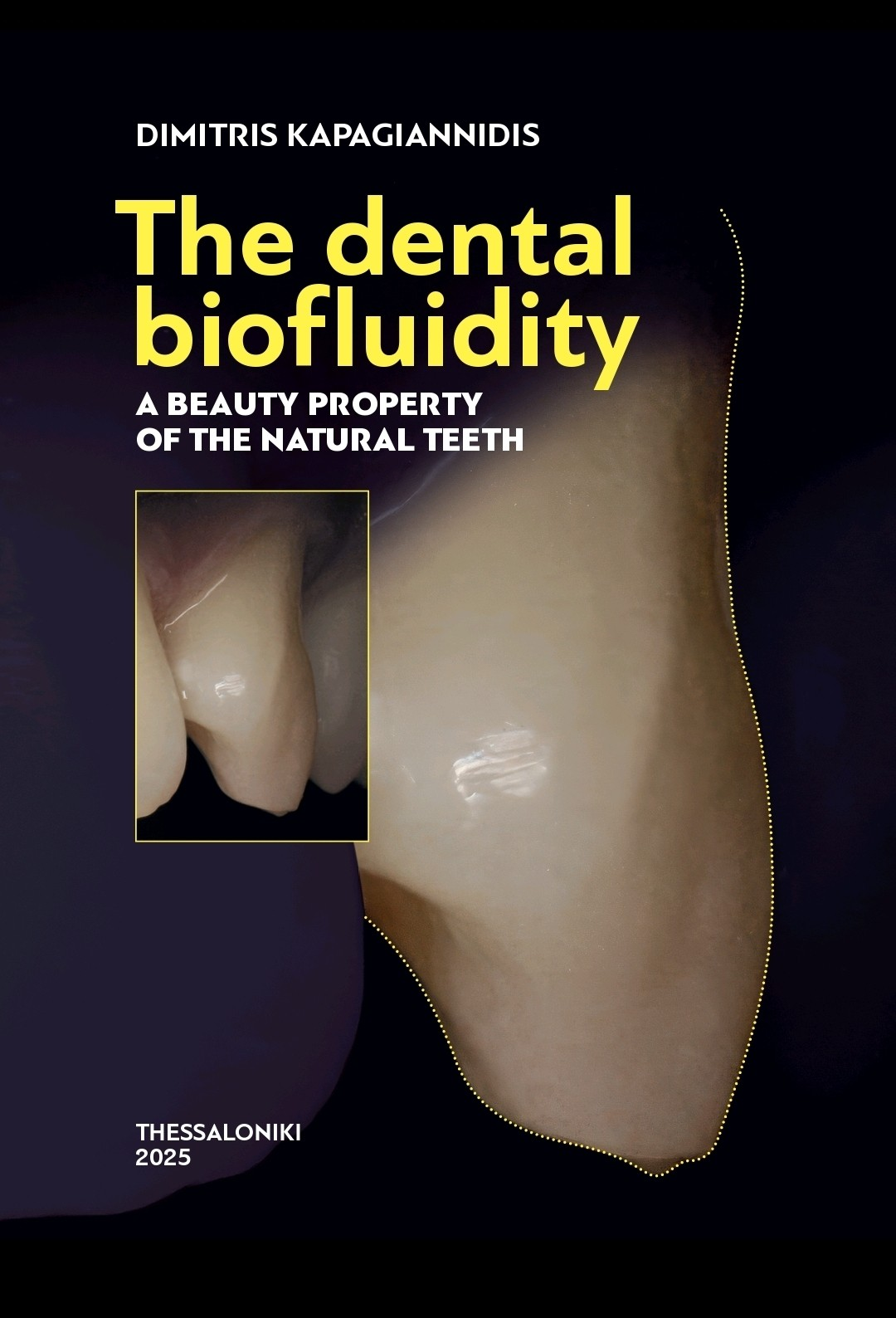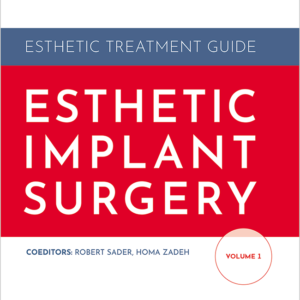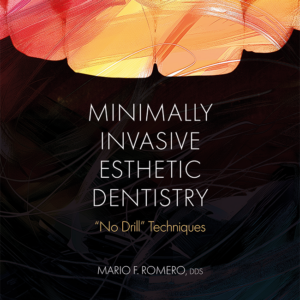Information
Οι κλινικοί (οδοντογιατροί, οδοντοτεχνήτες, ψηφιακοί σχεδιαστές) οι εμπλεκόμενοι στην ανακατασκευή των δοντιών βιώνουν σύγχιση κατα επιλογή και σχεδίαση των οδοντικών μορφών. Συνήθως κατασκευάζουν τυχαίες μορφές και σχήματα δοντιών χωρίς μορφική ενότητα ή στην καλλίτερη περίπτωση μία και μοναδική επαναλαμβανόμενη μορφή για όλα τα πρόσωπα και τις οδοντικές συνθέσεις χωρίς μορφική ταυτότητα.
Το πόνημα αυτό στόχο έχει να μυήσει τους κλινικούς με τρόπο απλό στην επιλογή της μορφής των δοντιών που θα ταιριάξει σε κάθε άτομο ξεχωριστά. Η θεωρία πάνω στην οποία στηρίζεται η επιλογή των φυσικών οδοντικών μορφών υπαγορεύεται από την εξελικτική πίεση για κατανάλωση συγκεκριμένου είδους τροφής. Αυτή η εξελικτική ανάγκη υπαγόρευσε την ανάπτυξη των λοβών οδοντίνης και κατ΄αντιστοιχία τις μορφές των δοντιών. Τα μονόλοβα δόντια συνυπάρχουν με σαρκοβορα διατροφή, τα τρίλοβα ή πολύλοβα με φυτοφάγα διατροφή και τα δίλοβα δόντια με μικτή διατροφή. Το λοβικό-μορφικό οδοντικό σύστημα αναλύεεται με λογική επαγωγή για να γίνει ένα εύκολο και αξιόπιστο εργαλείο στην επιλογή των οδοντικών μορφοσχημάτων από τον κλινικό. Ξεκλειδώνουν έτσι οι απλές και νομοτελιακές αρχές της φυσιολογικής-λειτουργίας του οδοντοπροσωπικού συμπλέγματος. Τα παραδείγματα με εικόνες και οι κλινικές προτάσεις σε ολα τα επίπεδα της οδοντικής σύνθεσης (φυσική, κοσμητική, αισθητική) αποτελούν ένα ξεμπέρδεμα των κλινικών επιλογών που καλούμαστε ως κλινικοί να κάνουμε καθημερινά.
Προσδοκώ το πόνημα αυτό να βοηθήσει τους κλινικούς, τους εμπλεκόμενους με την οδοντική κατασκευή και ενσωμάτωση, σε μια στοχευμένη επιλογή των μορφοσχήματων μιας φυσικής οδοντικής σύνθεσης ενταγμένης σε μία προσωπική ταυτότητα.
Clinicians (dentists, dental technicians, digital designers) involved in tooth reconstruction experience confusion when selecting and designing dental forms. They usually construct random tooth forms and shapes without morphological unity or, at best, a single, repeating form for all faces and dental compositions without morphological identity. This work aims to introduce clinicians in a simple way to the selection of the tooth form that will suit each individual. The theory on which the selection of natural dental forms is based is dictated by the evolutionary pressure to consume a specific type of food. This evolutionary need dictated the development
of dentin lobes and, accordingly, the forms of teeth. Monolobed teeth coexist with carnivorous diets, trilobed or multilobed with herbivorous diets, and bilobed teeth with mixed diets. The lobular-morphological dental system is analyzed by logical induction to become an easy and reliable tool in the selection of dental morphologies by the clinician. Thus, the simple and normative principles of the physiological functioning of the dental-facial complex are unlocked. The examples with images and the clinical suggestions at all levels of the dental composition (physical, cosmetic, aesthetic) constitute an untangling of the clinical choices that we as clinicians are called to make daily. I expect this work to help clinicians, those involved in dental construction and integration, in a targeted selection of the morphologies of a natural dental composition integrated into a personal identity.
Contents
Chapter 1
The tooth surface morphoschematic biofluidity
The dentinal lobes directed morphoschema theory
Introduction
Terminology
Introduction
Reomorph
Hydroschema
The dental biofluidity terms analysis
1. Reomorphic biofluidity term analysis
2. Hydroschematic biofluidity terms analysis
The origin of the biomorphic fluidity
Introduction
Teeth biofluidity origin
The morphic biofluidity in the human perception
Introduction
Teeth morphotypes fluidity and human perception
1. The conical morphotypes
2. The rectangular morphotypes
Clinical identification of the teeth biofluidity restoration
The clinical biofluidity identification in the clinician’s perception
The biofluidity conflict among clinicians and patients
The dental biofluidity analysis
Introduction
The constituents or elements of dental morphoschematic biofluidity
Analysis of the teeth’s surface geometrical characteristics
1. The curved hydro-lines of the dental biofluidity
2. The curved hydro-surfaces of the dental biofluidity
3. The curved volumes of the dental biofluidity
The functional teleology and reomorphic biofluidity
of the teeth
Introduction
Teeth function and biofluidity teleology
Teeth function and geometric reomorphs categorization
Restoration of the morphofunctionally accurate teeth
Classification of dental biofluidity characteristics
Introduction
The external tooth morphoschematic biofluidity characteristics
Introduction
1. The quantity of external dental fluidity
2. The quality of external dental fluidity
3. The location identification of external dental fluidity
4. Clinical indices of external tooth fluidity
The occlusal table’s size restriction on posteriors
Cervical mesio-distal restriction index
The curvature of the gingival line
The “tooth face” biofluidity index
The surface concavities and bulges index
The sharpness of the occlusal crests
The degree of concavity of the palatal surface index of the anterior teeth
Chapter 2
The internal tooth Reomorphic fluidity (Dentinal lobes,
DEJ, pulp)
Introduction
The dentinal lobes
Introduction
Dentinal lobes clinical identification
The central lobe issue
Introduction
The central lobe characteristics identification
The mesiolabial axial ridge prominence
The central lobe deficiency. The “shovel” and “double shovel” teeth
morphoschema
The dentinal lobes and the enamel cusps correlation
The bio-crests and bulges issue
Dentino-enamel bulges and the morphoschematic biofluidity
Introduction
The tooth cervical bulges and the functional efficiency
The enamel bands
The occlusal enamel bulges
Restorative management of the dentinal lobes
Introduction
The restoration of the dentinal lobes and the cusps’ lobular morphs
The lobular fluidity restoration guidelines
Chapter 3
The biofluidity of dental perigrammata-reomorphs
(Perigrammata of teeth)
Introduction
Reomorphic teeth groups biofluidity analysis
Introduction
Common reomorphic teeth characteristics considerations
Clinical recommendations on the reomorphic and hydroschematic
perigrammata unity reconstruction
Clinical recommendations on the reconstruction of the cervical concavities unity
Maxillary Incisors’ (MaxIs) reomorphic biofluidity analysis
1. The anterior aspect reomorphic biofluidity analysis
2. The lateral aspect reomorphic MaxIs’ biofluidity analysis
Introduction
The lateral aspect of the labial axial reoperigramma
3. The occlusal aspect reomorphic MaxIs’ fluidity analysis
Introduction
1. MaxIs’ labial surface reomorphic mesiodistal biofluidity on occlusal aspect
2. Incisal ridge reomorph and location biofluidity on occlusal aspect
4. The palatal-lingual aspect reomorphic MaxIs’ biofluidity analysis
Maxillary Canines’ (MaxCs) reomorphic biofluidity analysis
1. Maxillary canines’ (MaxCs) anterior aspect reomorphic fluidity analysis
2. Maxillary canines’ (MaxCs) buccal aspect reomorphic fluidity analysis
3. Maxillary canines’ (MaxCs) occlusal and palatal aspect reomorphic
fluidity analysis
Maxillary premolars’ (MaxPs) reomorphic biofluidity analysis
Introduction
1. Maxillary premolars (MaxPs) anterior aspect reomorphic fluidity
analysis
2. Maxillary premolars (MaxPs) buccal aspect reomorphic fluidity analysis
Maxillary Molars’ (MaxMs) reomorphic biofluidity analysis
Maxillary molars (MaxMs) buccal aspect reomorphic fluidity analysis
Mandibular Incisors (MandIs) reomorphic biofluidity analysis
1. The anterior-labial aspect of the MandIs area biofluidity analysis
The MandIs area arrangement biofluidity analysis
The MandIs incisal edges and teeth axes biofluidity
Mandibular Incisors (MandIs) lobular biofluidity
2. The lingual aspect reomorphic MandIs biofluidity analysis
Mandibular Canines (MandCs) reomorphic biofluidity analysis
Introduction
1. The anterior-labial aspect reomorphic MandCs biofluidity analysis
2. The MandC’s reomorphic analysis of the anterior aspect
3. The MandCs’ reomorphic analysis of the lingual aspect
Mandibular premolars (MandPs) and molars (MandMs)
reomorphic biofluidity analysis
Introduction
The MandPs’ reomorphic biofluidity analysis of the lingual aspect
Morphs biofluidity inference in restorations
Chapter 4
The biofluidity of dental surface hydroschema
(Surfaces of teeth)
Introduction
Part A. Types of the tooth hydroschema
Classification of the types of the tooth hydroschema
The hydroschematic inter-tooth diversity
Textured hydrofluid teeth surface analysis
Introduction
Terminology
The lobular textured teeth prevalence
Texture components
Teeth texture hydrofluidity restoration
Glossed hydrofluid teeth surface analysis
Introduction
Terminology
The clinical gloss identification
Types of hydrogloss
Introduction
Perikymata
Teeth gloss and shade taking
Degrees of teeth hydrogloss
Teeth gloss and material restorative management
Morphs of the surface hydro-gloss reflections
Restoring the tooth surface hydrogloss
Considerations on the textured and glossy surfaces restoration
Lustred hydrofluid teeth Surface
Introduction
Definition
Surface Hydroluster types
The specular reflection hydroluster phenomenon (bright hydroluster)
The diffused reflection hydroluster phenomenon (haze hydroluster)
The hydroluster iridescence phenomenon
The hydroluster pearlescence, nacreous phenomenon
Part B. Hydroschematic teeth groups biofluidity analysis
Introduction
Common hydroschematic units or morphemes of the teeth biofluidity
1. The “tooth face”
2. The cervical bulge prominence
3. The distal cervical concavity morpheme
4. Middle third concavity
5. The lobes hydroschematic prominence
Teeth groups hydroschematic fluidity analysis
Introduction
1. Maxillary Central Incisors (MaxCIs) labial aspect hydroschematic fluidity
analysis
MaxCIs hydroschematic characteristics and teeth morphs
2. Maxillary Lateral Incisors (MaxLIs) hydroschematic biofluidity analysis
Maxillary lateral Incisors (MaxLIs) labial aspect hydroschematic fluidity analysis
Maxillary lateral Incisors (MaxLIs) occlusal aspect hydroschematic fluidity analysis
Maxillary Canines (MaxCs) hydroschematic biofluidity analysis
1. Maxillary canines buccal aspect hydroschematic biofluidity analysis
2. Maxillary canines occlusal aspect hydroschematic fluidity analysis
3. Maxillary canines palatal aspect hydroschematic fluidity analysis
Maxillary Premolars (MaxPs) hydroschematic biofluidity analysis
Maxillary premolars (MaxPs) occlusal aspect hydroschematic fluidity analysis
Mandibular Incisors (MandIs) hydroschematic biofluidity analysis
The labial aspect of the hydroschematic MandIs biofluidity analysis
Chapter 5
The dental morphoschematic fluidity restoration
Introduction
A. Tooth reomorphic biofluidity restoration
1st step. Reomorphic teeth biofluidity identification
2nd Step. The tooth reomorphic biofluidity analysis
Introduction
1. Perceiving tooth morphs through point landmarks
2. Perceiving tooth morphology through line distances
Introduction
3. Perceiving tooth reomorphs through volumes projections
3rd Step. The tooth reomorphic biofluidity integration concerns
B. Teeth hydroschematic biofluidity restoration
Introduction
Tooth hydrotexture management by an add-on restorative process
Cases of management of add-on volumes
Case of adding-on inclined curved volumes and curved lines for surface texturing
Case of adding interdental tooth volume and changing teeth’s reomorphs,
hydrotexture and perceptional balance
Case of enhancing teeth biofluidity by developing textured teeth surfaces
Management of the location of the added-on fluid volumes
Tooth hydrotexture restoration by carving (cut-off) process
1st step. Morphoschema identification
2nd step. Sketch on the tooth surface the biofluidity characteristics
3rd step. The morphoschematic surface undulation carving
4th step. Engrave texturing deep vertical grooves
5th step. Engrave texturing superficial vertical grooves
6th Step. Engraved horizontal lines
Tooth surface hydrogloss restoration
Cut-off process and gloss
Tooth surface hydroluster restoration
Superficial finish process and luster
Differentiating surfaces biofluidity restoration
Dimitris kapagiannidis




